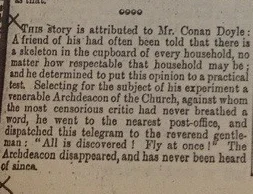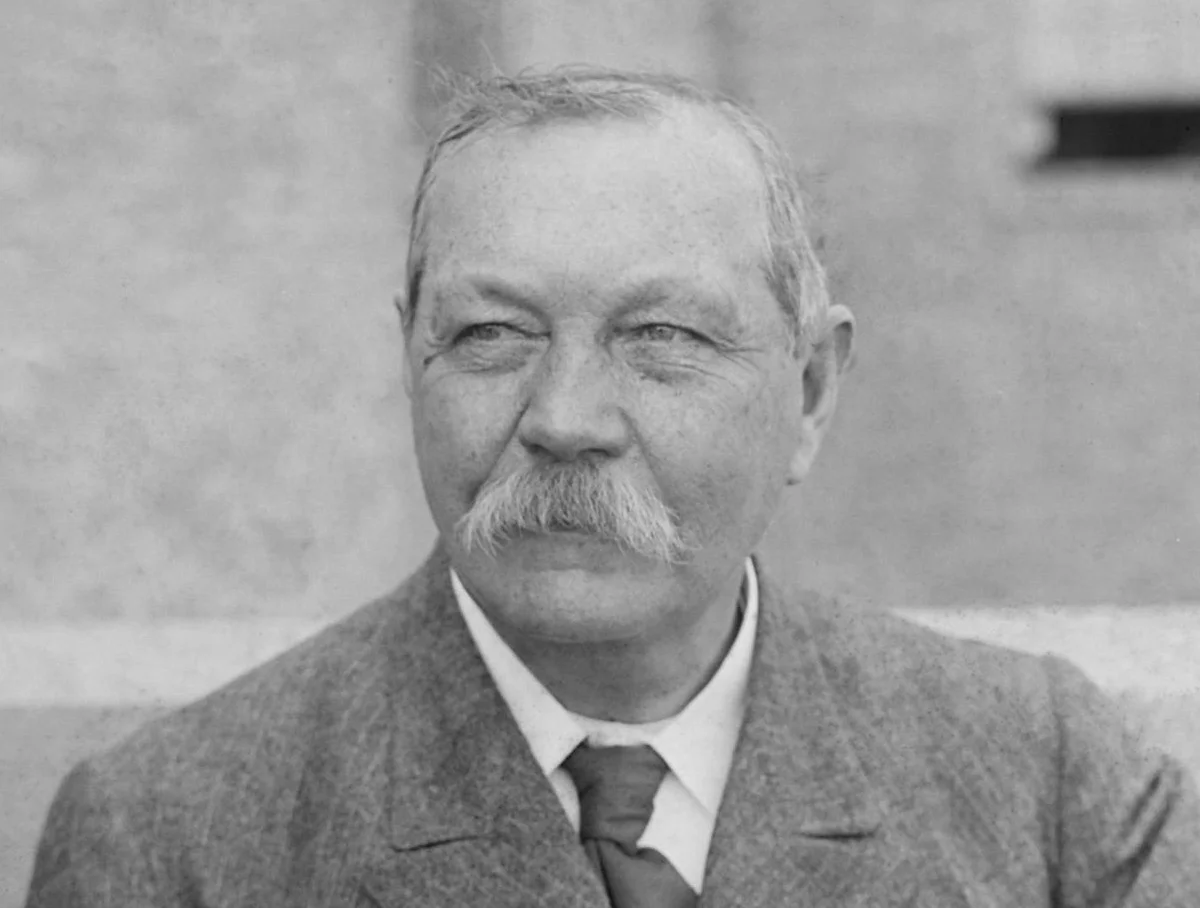According to popular legend, the creator of Sherlock Holmes once unwittingly caused influential businessmen, previously considered honest people, to flee the country. We checked if everything was really like that.
Here's what a popular story on the Internet says: “Sir Arthur Conan Doyle, as a joke, chose the addresses of 12 of the largest London bankers, who had a reputation for exceptionally honest and respectable people, and sent each of them a telegram with the following content: “Everything has come out. Hide.” The next day, all 12 bankers disappeared from London. By the fact of their flight, they all recognized the criminal and antisocial nature of their activities.”
This text is distributed practically unchanged by such resources as Who Is Who, Sports.ru, "I cried", you can read about it in the book “Necessary reading. 1000 new interesting facts for the mind and entertainment". The story is also popular West.
Arthur Conan Doyle created the image of the great detective Sherlock Holmes not only to please the reader's taste. He himself adored detective novels, and also had a deep interest in real crimes. As reported sources, "non-fiction books about crimes and clippings from newspapers and magazines formed a library, which was certainly not as disorderly as Holmes's in Baker Street, but certainly almost as extensive."
However, this was not enough for the writer - he took an active part in several high-profile criminal cases. So, Conan Doyle's own investigation eventually helped to free Oscar Slater, found guilty of murdering a wealthy lady. Sentenced to death, which was later commuted to life at hard labor, Slater spent 18 years in prison until journalist William Park came to the same conclusions as Arthur Conan Doyle had reached years earlier in his published investigation. Initially, the writer’s arguments were not listened to, but his active public position, spurred by a plea for help from Slater himself (Oscar’s released cellmate carried a note for the writer on waterproof paper under his tongue), later moved the matter forward. In another similar situations Conan Doyle helped free George Edalji, who allegedly secretly tortured and killed other people's livestock. The last case was the impetus for emergence in the country of the Court of Criminal Appeal.
Thus, there is some reason to believe that here, too, Sir Arthur Conan Doyle could have dealt with real crimes. However, you will not find any mention of this extraordinary case, which could not help but leave its mark, neither in the journalism of Arthur Conan Doyle, nor in numerous authoritative biographies, nor in the rich online archive, which contains, in fact, all the personal correspondence of the writer, many interviews, lectures and even a collection of dedicatory inscriptions. Despite this, the story about the telegram can hardly be called new - researchers discovered its earliest mention in one of the issues of a British magazine Tit-Bits, published on September 18, 1897:

Here's what it says: “This story is attributed to Mr. Conan Doyle. One of his acquaintances has heard more than once that there is a skeleton in the closet in every home, no matter how respectable it may be. An acquaintance decided to test this opinion in practice. Choosing for his experiment one venerable archdeacon of the Church of England, about whom even the harshest critic would not utter a word, he went to the nearest post office and sent a telegram to the venerable gentleman: “Everything has been revealed! Run!” The archdeacon disappeared, and nothing has been heard of him since.”
As you can see, here we are no longer talking about Conan Doyle himself, but about his acquaintance, and instead of 12 bankers, one archdeacon is mentioned. Judging by all the signs, we are dealing with a tale, a comic story. It should be noted that such anecdotes adorn the entire front page of the publication, and this humorous specificity of the Tit-Bits magazine was discussed at one time wrote famous writer Gilbert Keith Chesterton. In the newspaper The Washington Post dated June 16, 1901, this tale was already mentioned in a modified version - Doyle himself allegedly said about skeletons in the closet during one dinner party, and the decision to send such a telegram was the result of a public discussion that ensued after that. Nevertheless, this does not make the story any more plausible, even if we assume that it was later told by Conan Doyle himself.
In addition, one cannot help but say that such a plot became common at least more than a century ago: Rudyard Kipling in one of his works he described a similar psychological experiment, only in connection with betrayal, and not exposure. A similar telegram (only with friends instead of bankers) is also attributed to Mark Twain.
Thus, we can say with a high degree of confidence that the story about the 12 bankers is a development of the popular but fictitious story about Arthur Conan Doyle.
Most likely not true
If you find a spelling or grammatical error, please let us know by highlighting the error text and clicking Ctrl+Enter.







